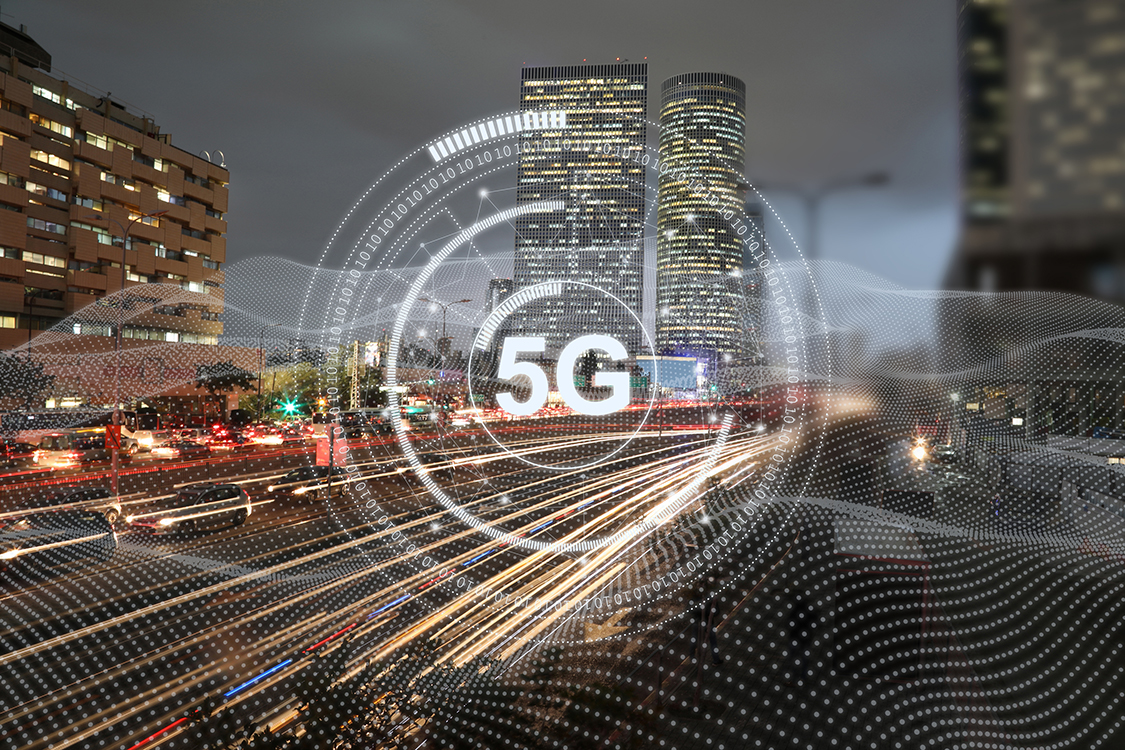
5G and Pilot Projects to Optimize New Infrastructures
By Akira Jones, BIM Leader, HH Angus & Associates Limited
By now, most of us in the Architecture, Engineering, and Construction (AEC) sector have read about, lamented and experienced our industry’s general conservativeness and inability to affect change quickly, particularly with respect to developing and emerging technology. However, we are starting to see now that this is changing. Large-scale 3D printing, generative design, virtual/augmented/mixed reality, artificial intelligence, design process automation through software and a push towards a common data environment for design and construction information represent some of the many ways AEC is embracing the digital era.
The nature of design consulting is also changing. Multi-disciplinary design firms are transforming into software developers, moving their way into the SaaS market. General contractors employ teams of software developers. Companies from non-engineering sectors are rapidly entering into the AEC market. Professional services companies and technology start-ups are developing platforms for optimizing building infrastructure through Edge Devices and creating operational/digital twins. Much like the rest of the world, AEC is converging towards digital processes and the borders between different sectors are becoming less defined.
Edge Devices and Digital Twins will have a massive impact on how we design, build and operate building infrastructure, particularly as we continue our push towards a more sustainable built environment through low or zero carbon, net zero and more. We are already seeing a big uptake of smart buildings technologies and the global smart building market is expected to reach almost 62 billons USD by 2024.
Understanding Internet of Things, or IoT technology, in particular, and the current and future benefits to the built environment and how people interact with it will be instrumental in HH Angus’ ability to design spaces that perform better, create better and longer lasting value, and reduce the impact on the environment. It’s certainly easier to design and build new buildings with smart technology but what really interests us is the opportunity in the massive stock of existing infrastructure that can significantly benefit from these technologies. In fact, they provide an opportunity to evolve the ways in which we deliver our work and our relationships with the end-users, from the building owners and operators to occupants.
As designers, we often lose touch with the infrastructure we design, perhaps coming back years later to find something unrecognizable from its original state. At the opposite end, engineers also come into buildings later in their lifecycles, often without proper as-built documentation and have to scrape together any available information about how or why the building operates the way it does. Not an ideal situation, which can typically add time and expense to most projects.
Gathering operational, environmental and presence data can provide a bridge between the building, its occupants, and the engineers to create the potential for gaining useful insight into a building’s real-world operations and occupant behavior.
To this end, HH Angus had the desire to gain a deeper understanding of the relationship between smart buildings technologies and improving building performance. We launched our Smart Spaces initiative in 2019. Through this, we are exploring these new technologies through our own initiatives as well as research partnerships with academic institutions and tech start-ups and established providers. With Smart Spaces, we are exploring the use of IoT edge devices to gather environmental and occupancy data in commercial and institutional buildings.
As our pilot project had begun pre-COVID, we, like many firms, had to quickly adjust our plans. With everyone working from home, our office was empty, and we were trying to figure out what data we could collect since there was no one in the building. Like any challenge, this presented an opportunity. Where our previous approach had been to install a set of sensors that gathered a wide array of data with plans to see what insights we could glean, we were presented with a situation that provided us an immediately relevant use case. We thought about ways that the sensors could be used to aid our eventual re-entry into our own office. We shifted the balance of sensors to include more presence sensors to aid in people flow throughout our office. The sensors were placed in common and high traffic areas, giving employees aid in maintaining the ability to socially distance while in the office while also giving insight into usage patterns of these common spaces. The collected data is integrated and aggregated into an intuitive dashboard and transferred to the cloud/other edge devices via the 4G network such that we can view the basic analytics.
This pivot has helped us gain insight into the challenges faced by many of our commercial and institutional clients.
With the first stage of our pilot implemented, we look to expand our research to the 5G network. We were fortunate enough to be awarded access to the 5G ENCQOR test-bed located in the MaRS Discovery District (in downtown Toronto) which gives us the opportunity to explore use cases that can benefit from the low latency performance of 5G technology. We are currently engaged with our clients to determine real-world use cases for existing buildings to research on the testbed, paving the way for purpose-built data platforms.
As with any new (or new to us), technology there are no giant leaps in innovation, only deliberate and incremental steps forward. Where the challenge lies is not in using these technologies, but in determining how these new technologies can help our clients and our employees adapt and succeed in an ever-changing world. As consulting engineers, we can (and should) take a little step out of the traditional AEC approach and adopt some of the best practices (and mindset) of tech start-ups – mainly being inherently curious; focus on possibilities as opposed to the way its always been done; and be willing to quickly prototype, learn, and modify to get a minimum viable product into the real world.
HH Angus is an employee-owned, independent consulting firm of engineers, technical specialists and project managers with offices in Vancouver, Toronto and Montreal. Our core services include mechanical and electrical engineering, lighting design, vertical transportation, energy, sustainable design, information communications audiovisual technology (ICAT) and security design and digital strategy consulting. Together, we create innovative solutions for our clients’ most complex challenges to expand what is possible for a better future.
Reprinted from CanBIM Innovation Spotlight Publication 2021
https://www.canbim.com/articles/why-consulting-engineering-firms-should-think-more-like-tech-start-ups

Akira Jones, P.Eng., LEED AP, Principal
BIM Leader
akira.jones@hhangus.com
Akira Jones, P.Eng., LEED AP, Principal
BIM Leader
akira.jones@hhangus.com


